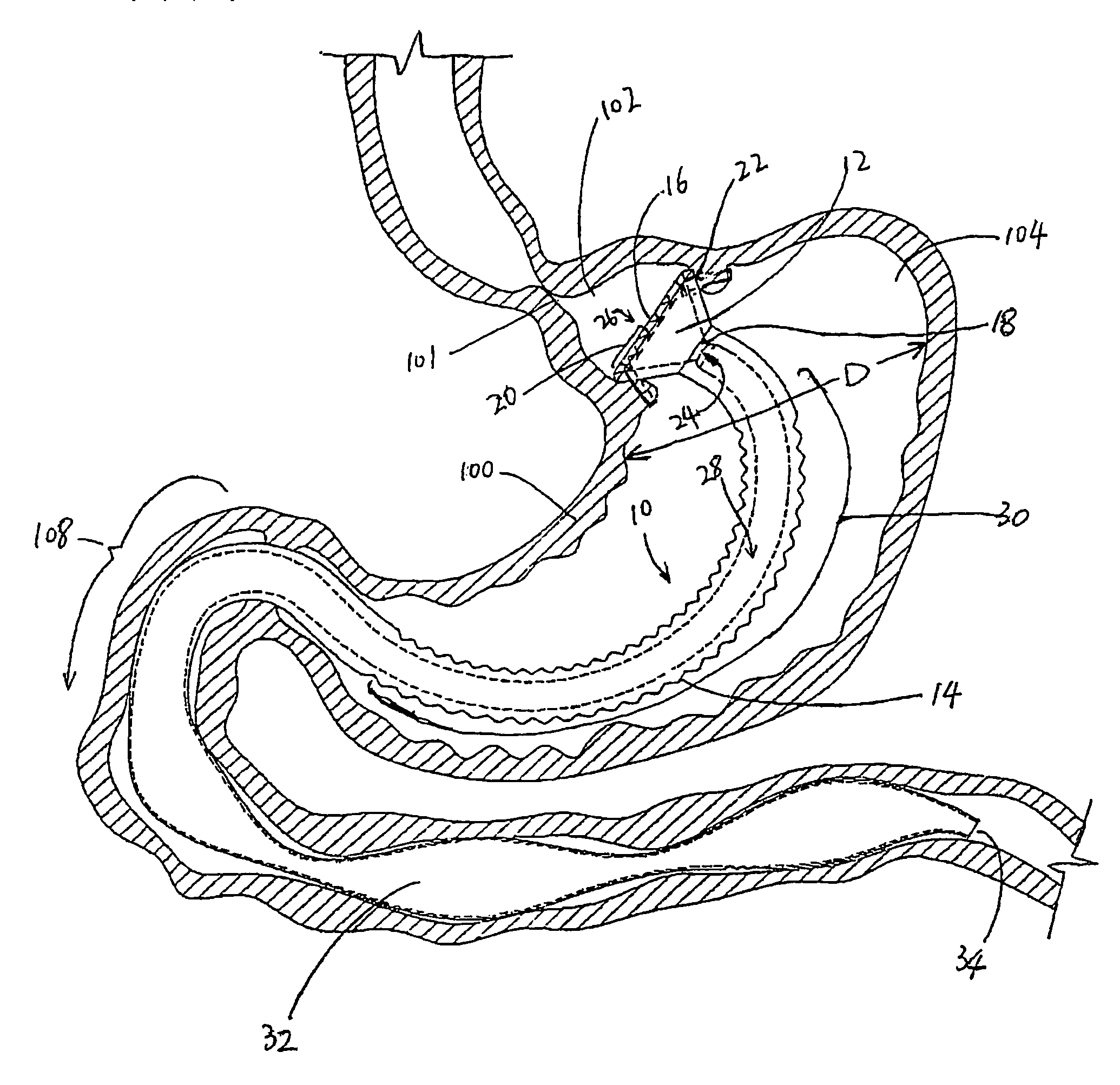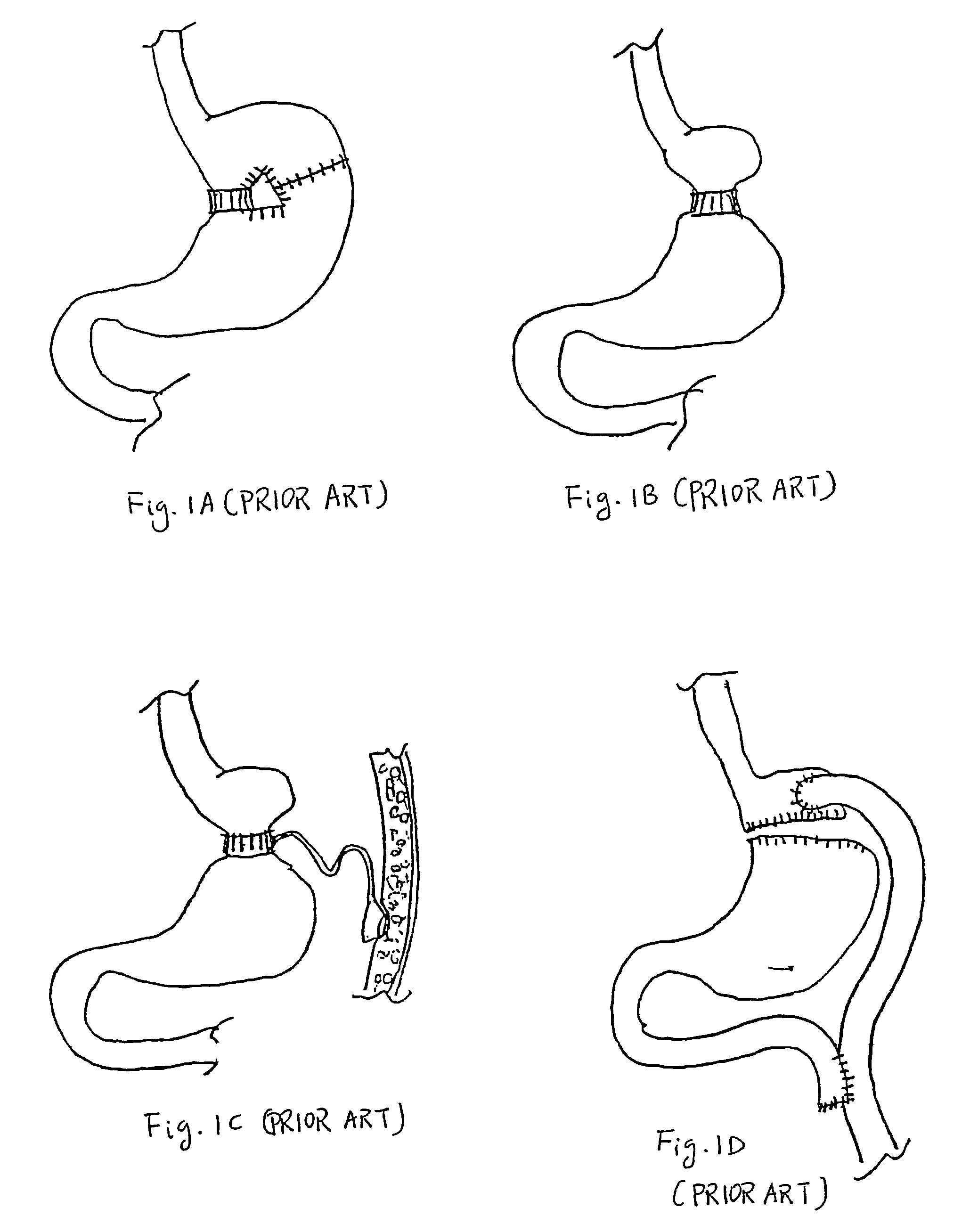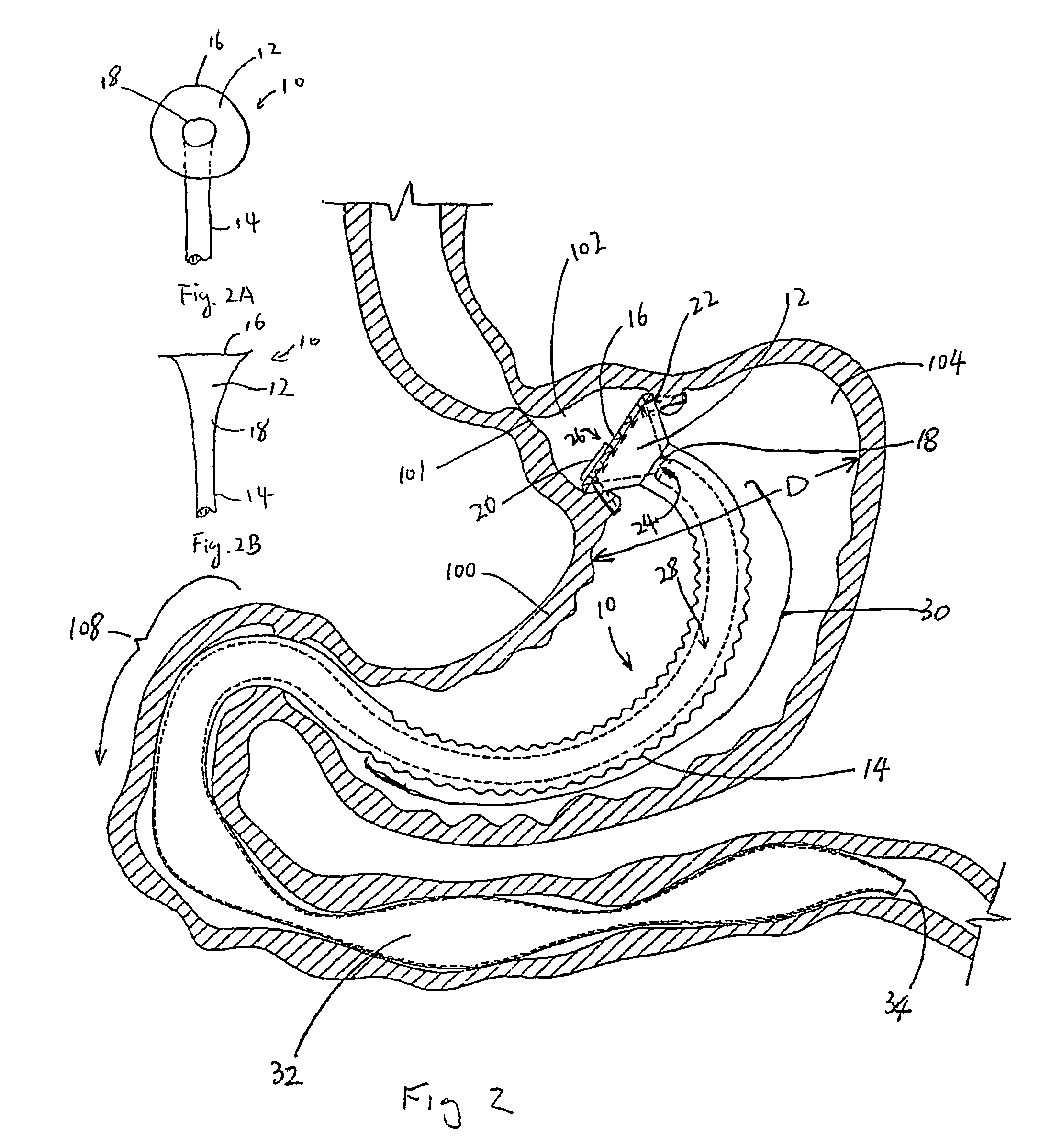Gastric bypass prosthesis
a gastric bypass and prosthesis technology, applied in the field of morbid obesity surgical treatment, can solve the problems of band slipping out of position, affecting the effect of the procedure, so as to reduce the incidence of reflux, reduce the amount of food intake of patients, and increase the opening pressure
- Summary
- Abstract
- Description
- Claims
- Application Information
AI Technical Summary
Benefits of technology
Problems solved by technology
Method used
Image
Examples
Embodiment Construction
[0065]For the purposes of promoting an understanding of the present invention, reference will now be made to the embodiments illustrated in the drawings and specific language will be used to describe the same.
[0066]FIG. 2 shows a preferred embodiment of a gastric bypass prosthesis in accordance with the present invention. As shown in FIG. 2, the gastric bypass prosthesis 10, which is disposed in a stomach 100, includes a substantially annular element 12 and an elongated tubular element 14. In other preferred embodiments, as shown in FIGS. 2, 2A, and 2B, the annular element 12 may be flat (FIG. 2A), substantially conical-shaped, funnel-shaped, or trumpet-shaped (FIG. 2B). The element 12 also can be constructed with other shapes suitable for attaching to the stomach lining. The element 12 is preferably made of a flexible material, but also can be made of rigid or semi-rigid materials. In one preferred embodiment, the annular element 12 may be flat-shaped and made of a flexible materia...
PUM
| Property | Measurement | Unit |
|---|---|---|
| volume | aaaaa | aaaaa |
| diameter | aaaaa | aaaaa |
| length | aaaaa | aaaaa |
Abstract
Description
Claims
Application Information
 Login to View More
Login to View More - R&D
- Intellectual Property
- Life Sciences
- Materials
- Tech Scout
- Unparalleled Data Quality
- Higher Quality Content
- 60% Fewer Hallucinations
Browse by: Latest US Patents, China's latest patents, Technical Efficacy Thesaurus, Application Domain, Technology Topic, Popular Technical Reports.
© 2025 PatSnap. All rights reserved.Legal|Privacy policy|Modern Slavery Act Transparency Statement|Sitemap|About US| Contact US: help@patsnap.com



